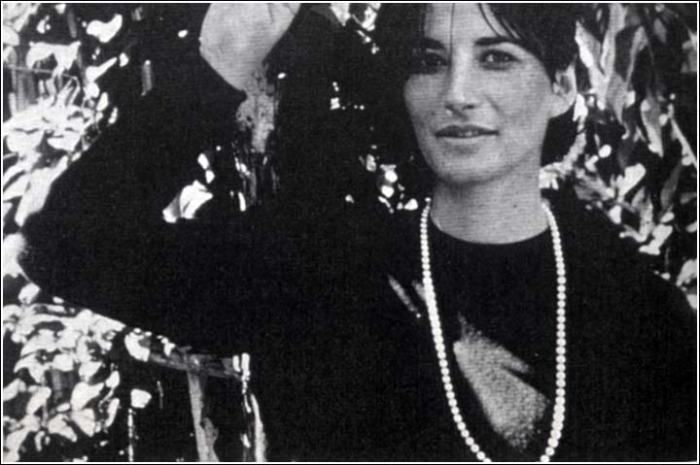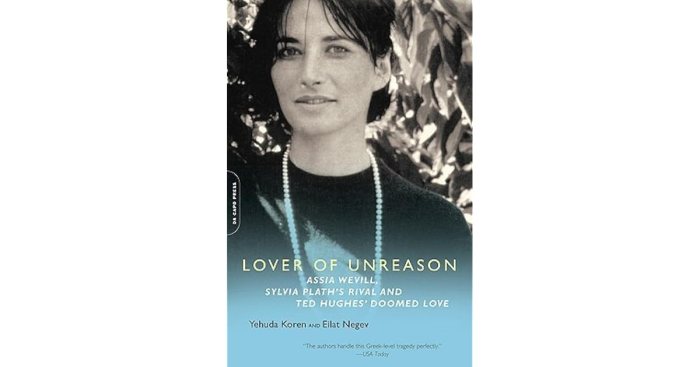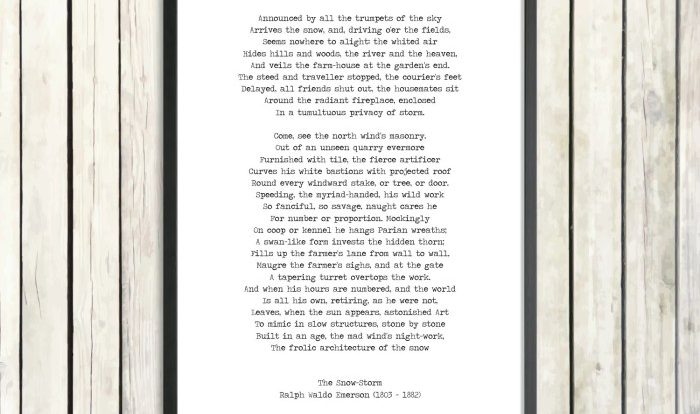The rival by sylvia plath – In the realm of poetry, Sylvia Plath’s “The Rival” stands as a captivating masterpiece that explores the complexities of love, loss, and the search for identity. With its haunting imagery and evocative language, Plath weaves a tapestry of emotions that resonates deeply within the reader’s soul.
The poem’s speaker, a woman grappling with the pain of unrequited love, confronts her rival, a symbol of her own insecurities and unfulfilled desires. As the poem progresses, Plath delves into the depths of human emotion, laying bare the vulnerability and desperation that accompany heartbreak.
Literary Context
The poem “The Rival” by Sylvia Plath was written during a period of intense personal turmoil for the poet. In 1959, Plath’s husband, Ted Hughes, had an affair with Assia Wevill, which devastated Plath and led to a deep depression.
Sylvia Plath’s Personal Experiences
Plath’s experiences with infidelity and loss are reflected in the poem’s themes of jealousy, betrayal, and revenge. The poem’s speaker expresses a deep sense of anger and resentment towards her rival, whom she sees as a threat to her relationship and her own sense of self-worth.
The poem’s vivid imagery and intense emotions also reflect Plath’s own struggles with mental illness. Plath suffered from severe depression throughout her life, and she often used her poetry to express her inner turmoil.
Poem Structure and Form

Sylvia Plath’s “The Rival” is a carefully crafted poem that utilizes structure and form to convey its themes and emotions. The poem consists of four stanzas, each with four lines. The stanzas are separated by blank lines, creating a sense of pause and reflection.
The poem’s rhyme scheme is ABAB, which contributes to its sing-song quality and reinforces the sense of inevitability and predictability in the speaker’s relationship with her rival.
Meter and Rhythm
The poem is written in iambic tetrameter, which means that each line consists of four iambs, or metrical feet consisting of an unstressed syllable followed by a stressed syllable. This regular rhythm creates a sense of tension and unease, reflecting the speaker’s emotional state.
Figurative Language, The rival by sylvia plath
Plath also employs a range of figurative language to convey her emotions. The speaker’s rival is described as a “vampire” and a “cat,” suggesting that she is both seductive and dangerous. The use of animal imagery reinforces the sense of the rival as a threat to the speaker’s identity and well-being.
Symbolism and Imagery

Plath employs a rich array of symbols and vivid imagery to create a haunting and evocative atmosphere in “The Rival.”
Objects and Colors
The poem is replete with objects and colors that symbolize the narrator’s emotional state and the nature of the rivalry.
- The “mirror”represents the narrator’s self-reflection and the comparison she draws between herself and the rival.
- The “green dress”symbolizes the rival’s youth, vitality, and allure.
- The “red shoes”represent the narrator’s passion, jealousy, and desire for revenge.
- The “black glove”symbolizes the narrator’s hidden intentions and the darkness that consumes her.
Nature
Nature also plays a significant role in the poem’s symbolism.
- The “moon”represents the narrator’s subconscious and the hidden emotions that drive her actions.
- The “flowers”symbolize the beauty and fragility of the rival, as well as the narrator’s envy and desire to destroy her.
- The “wind”represents the narrator’s inner turmoil and the destructive forces that threaten to consume her.
Figurative Language, The rival by sylvia plath
Plath also uses a range of figurative language to enhance the poem’s imagery and symbolism.
- Metaphors:“My rival is a mirror, a green dress,” “My red shoes, like two small flames.”
- Similes:“I can hear her heels click like tiny castanets,” “She is a flame that burns me to ashes.”
- Personification:“The moon… stares down at me with cold eyes,” “The wind whispers to me secrets I do not want to hear.”
These elements work together to create a vivid and evocative atmosphere that captures the narrator’s intense emotions and the destructive nature of the rivalry.
Themes and Motifs
The Rivalexplores several central themes and motifs, including:
Jealousy and Rivalry
Jealousy and rivalry are central to the poem. The speaker’s envy and anger towards her rival consume her, leading to feelings of insecurity and inadequacy. Through vivid imagery and metaphors, Plath conveys the destructive nature of jealousy and its ability to poison relationships and inner peace.
Sylvia Plath’s “The Rival” delves into the complexities of jealousy and rivalry. Its themes resonate with the ongoing debate surrounding the use of prefixes like “center” or “pen” to denote a specific location. Prefix with center or pen is a matter of linguistic preference, just as the protagonist in “The Rival” grapples with her own feelings of inadequacy and envy.
Female Identity and Beauty
The poem also explores issues of female identity and beauty. The speaker’s rival is portrayed as a beautiful and alluring woman, which exacerbates the speaker’s feelings of inferiority. Plath uses the rival as a symbol of the unattainable ideal of beauty that women are often pressured to conform to, highlighting the damaging effects it can have on self-esteem.
Transformation and Rebirth
The poem suggests the possibility of transformation and rebirth. Despite the speaker’s initial feelings of despair, she ultimately finds a sense of liberation and strength. The rival’s death becomes a catalyst for the speaker’s own rebirth, as she sheds her old insecurities and embraces a new sense of self.
Tone and Mood
The poem “The Rival” by Sylvia Plath is imbued with a complex interplay of tone and mood that evokes a profound emotional response from the reader. The poem’s tone can be characterized as a blend of bitterness, resentment, and a sense of loss.
The mood of the poem is somber and melancholic, as the speaker grapples with the pain of unrequited love and the presence of a rival who threatens to take her place in her beloved’s affections. The language and imagery employed by Plath contribute significantly to the establishment of this tone and mood.
Use of Language
The poem’s language is precise and evocative, with the speaker employing a series of sharp, cutting words to convey her emotional turmoil. Words such as “envy,” “hate,” and “despair” paint a vivid picture of the speaker’s inner torment. The use of alliteration and assonance, as in “her hair/hung down,” adds to the poem’s emotional intensity.
Imagery
Plath’s use of imagery is equally powerful in conveying the poem’s tone and mood. The speaker’s description of the rival as a “white goddess” with “ivory” skin and “gold” hair evokes a sense of beauty and perfection that the speaker feels she lacks.
This imagery serves to highlight the speaker’s feelings of inadequacy and her fear of being replaced.
The poem’s final lines, in which the speaker imagines the rival “laughing” and “winning,” further contribute to the poem’s somber mood. The use of the word “laughing” suggests a cruel indifference to the speaker’s pain, while the word “winning” underscores the speaker’s sense of defeat and loss.
Through its skillful use of language and imagery, “The Rival” creates a powerful and emotionally resonant tone and mood that immerses the reader in the speaker’s experience of heartbreak and despair.
Speaker and Perspective

The speaker of “The Rival” is a woman who is deeply hurt and jealous of her rival, a man who has stolen her lover’s affections. The speaker’s voice is bitter and resentful, and she paints a vivid picture of her rival as a heartless and cruel woman who has no regard for the feelings of others.
The speaker’s perspective is deeply subjective, and she sees her rival through the lens of her own pain and anger. She is unable to see any good in her rival, and she attributes all of her own suffering to her rival’s actions.
The speaker’s perspective is not necessarily reliable, but it does provide a powerful and moving account of the pain of jealousy and betrayal.
The Speaker’s Voice
The speaker’s voice is characterized by its bitterness, resentment, and anger. She uses strong language to describe her rival, and she does not shy away from expressing her hatred and contempt. The speaker’s voice is also full of pain and despair, as she struggles to come to terms with the loss of her lover.
Literary Devices: The Rival By Sylvia Plath
Sylvia Plath employs a range of literary devices in “The Rival” to enhance its meaning and impact, creating a vivid and emotionally charged depiction of the speaker’s rivalry with another woman.
The poem is rife with metaphors, similes, and personification, which bring the abstract concepts and emotions to life.
Metaphors
- The rival is portrayed as a “white goddess,” a metaphor that suggests her purity, beauty, and unattainability.
- The speaker’s jealousy is described as a “green beast,” a metaphor that captures the destructive and consuming nature of her emotions.
Similes
- The rival’s voice is compared to “a flute,” a simile that evokes its sweetness and allure.
- The speaker’s own voice is described as “a crow’s cry,” a simile that highlights its harshness and bitterness.
Personification
- The rival’s eyes are personified as “spies,” a technique that suggests their ability to see through the speaker’s facade.
- The speaker’s tears are personified as “devils,” a metaphor that conveys their tormenting and destructive nature.
These literary devices work together to create a multi-layered and evocative poem that explores the complex and often destructive emotions of jealousy and rivalry.
Critical Reception

Sylvia Plath’s “The Rival” has garnered significant critical attention since its publication, eliciting diverse interpretations and perspectives from literary scholars and critics.
One notable aspect of the poem’s reception is its exploration of female rivalry and jealousy, themes that have resonated with readers and critics alike. Many critics have analyzed the poem as a reflection of Plath’s own experiences with female competition and the complex emotions that accompany it.
Feminist Perspectives
From a feminist perspective, critics have examined the poem’s portrayal of female power and agency. Some have argued that the speaker’s desire to triumph over her rival represents a subversion of traditional gender roles, as it challenges the notion of women as passive and subordinate.
Psychological Interpretations
Others have approached the poem from a psychological perspective, focusing on the speaker’s mental state and the psychological dynamics at play. Critics have analyzed the speaker’s feelings of envy, hatred, and obsession, exploring the complex emotions that can arise in situations of rivalry.
Literary Techniques
Critics have also praised Plath’s skillful use of literary techniques in “The Rival.” The poem’s vivid imagery, evocative language, and rhythmic structure have been widely recognized as contributing to its emotional intensity and psychological depth.
FAQ Corner
What is the central theme of “The Rival”?
The poem explores the themes of unrequited love, loss, and the search for identity.
How does Plath use symbolism in the poem?
Plath employs symbols such as the “black shoe” and the “white hand” to represent the speaker’s rival and her own unfulfilled desires.
What is the significance of the poem’s form?
The poem’s free verse structure and irregular rhyme scheme reflect the speaker’s emotional turmoil and fragmented state of mind.

